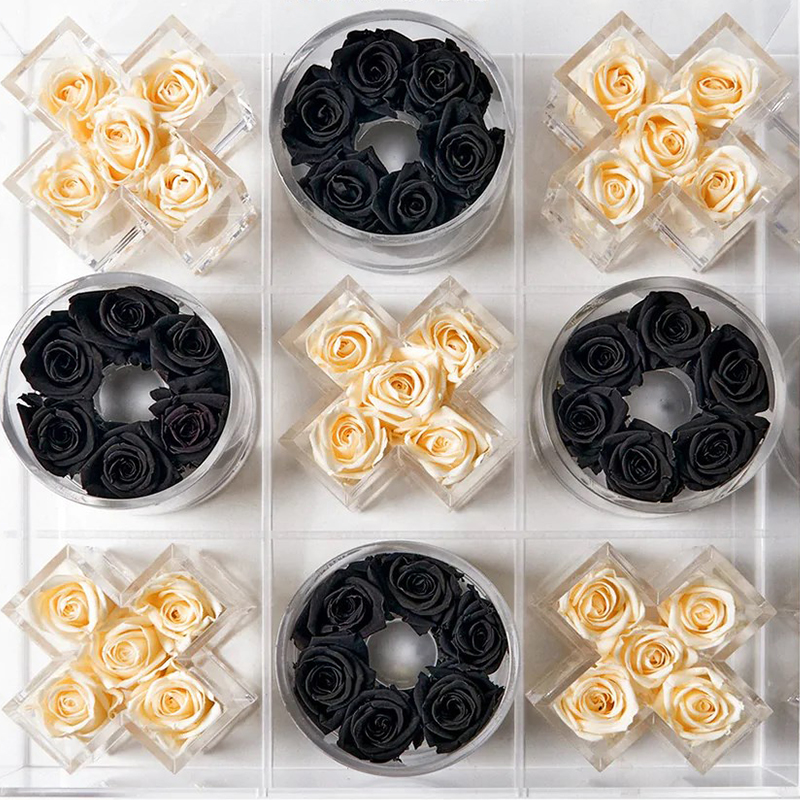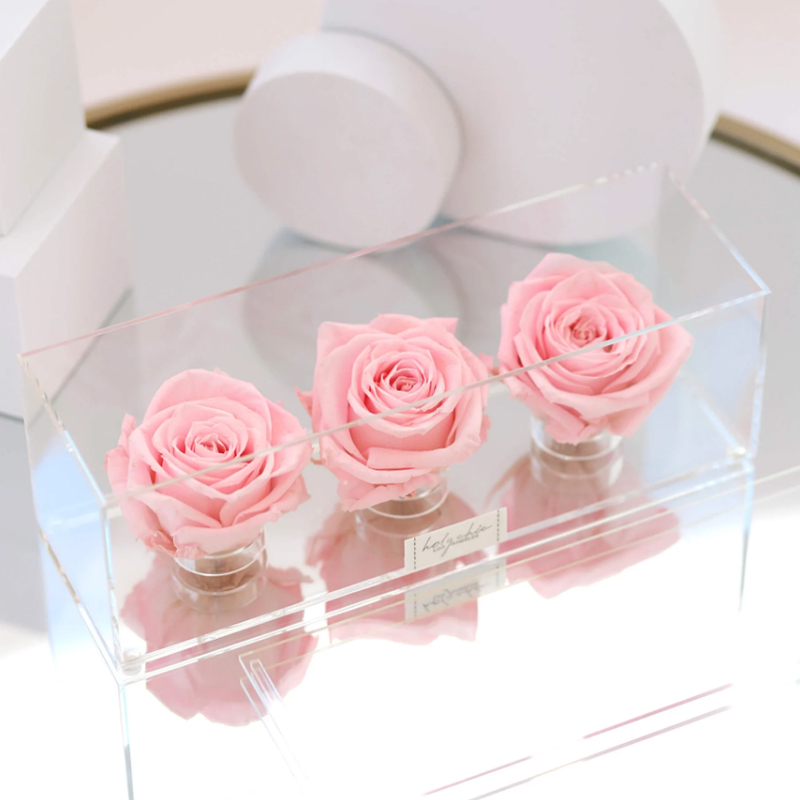- All
- Product Name
- Product Keyword
- Product Model
- Product Summary
- Product Description
- Multi Field Search
Views: 205 Author: XianDa Publish Time: 2024-12-19 Origin: Site

Content Menu
● How to Make a Pallet Flower Box
● Gathering Materials and Tools
● Step 1: Selecting and Preparing the Pallet
● Step 2: Disassembling the Pallet
● Step 3: Measuring and Cutting
● Step 10: Filling and Planting
● Creative Ideas for Your Pallet Flower Box
● Customizing Your Pallet Flower Box
Creating a beautiful and functional flower box from a wooden pallet is an excellent way to upcycle materials and add charm to your garden or patio. This DIY project is not only cost-effective but also allows you to customize the size and style to fit your specific needs. In this comprehensive guide, we'll walk you through the process of transforming a simple pallet into a stunning flower box, perfect for growing your favorite blooms or even herbs and vegetables.
Before you begin, make sure you have all the necessary materials and tools:
- A clean wooden pallet (preferably heat-treated)
- Saw (hand saw, jigsaw, or power saw)
- Hammer and nails
- Screwdriver and screws
- Sandpaper
- Drill (optional)
- Measuring tape
- Pencil
- Safety gear (gloves, safety glasses)
- Wood stain or paint (optional)
- Landscape fabric or plastic liner
- Staple gun
- Potting soil
- Plants of your choice
Pallet and tools


Choose a pallet that is in good condition and free from any chemical treatments. Look for a stamp indicating "HT" (heat-treated) on the pallet. Clean the pallet thoroughly and sand down any rough edges to prevent splinters.
When selecting a pallet, consider its size and condition. Larger pallets will provide more wood for your project, but they may be more challenging to work with. Inspect the pallet carefully for any signs of rot, mold, or insect damage. If you're unsure about the pallet's history, it's best to err on the side of caution and choose another one.
Carefully dismantle the pallet using a hammer and pry bar. Remove any nails and set aside the wood pieces you'll be using for the flower box.
Disassembling a pallet can be a time-consuming process, but it's crucial for ensuring you have clean, usable wood for your flower box. Here are some tips to make the process easier:
- Use a reciprocating saw to cut through nails if they're difficult to remove.
- Work slowly and methodically to avoid damaging the wood.
- Sort the wood pieces as you dismantle the pallet, grouping similar sizes together.
Measure and mark the pieces you'll need for your flower box. The size can be customized, but a typical size might be around 15x43x15 inches. Cut the pieces to size using your saw.
Measuring and cutting pallet wood
When cutting your pallet wood, consider the following:
- Use a square to ensure your cuts are straight and accurate.
- If you're using a power saw, make sure to follow all safety guidelines.
- Cut a few extra pieces in case you make a mistake or need to replace a board later.
Begin by creating the base of your flower box. Arrange the cut pieces to form a rectangular shape and secure them together using screws or nails.
To create a sturdy base:
- Use longer pieces for the sides of the base and shorter pieces for the ends.
- Ensure the boards are flush with each other before securing them.
- Pre-drill holes to prevent the wood from splitting when you add screws.
Attach the side pieces to the base, ensuring they're securely fastened. If you want a tapered look, you can angle the sides slightly.
Assembling the flower box
When building the sides:
- Start with the corner posts, making sure they're perfectly vertical.
- Attach the side boards one at a time, checking for level as you go.
- If you're creating a tapered design, mark your angle on the corner posts before attaching the sides.
For extra stability, add corner supports or blocks to reinforce the structure. This step is particularly important if you plan to move your flower box or if it will be exposed to strong winds.
To add support:
- Cut small triangular blocks to fit in each corner.
- Secure these blocks with screws or nails from both sides.
- Consider adding a central support beam if your flower box is particularly long.
Drill several holes in the bottom of the flower box to allow for proper drainage. This step is crucial for the health of your plants.
Proper drainage is essential to prevent waterlogging and root rot. Here's how to ensure good drainage:
- Drill holes approximately 1/2 inch in diameter.
- Space the holes about 4-6 inches apart across the bottom of the box.
- Consider adding a slight slope to the bottom of the box to encourage water flow towards the drainage holes.
Line the inside of the flower box with landscape fabric or a plastic liner. This will help retain soil and moisture while allowing excess water to drain. Secure the liner with a staple gun.
Lining the flower box
When lining your flower box:
- Cut the liner slightly larger than needed to allow for overlap.
- Staple the liner along the top edge of the box, folding it over for a neat finish.
- Make small cuts in the liner where it covers the drainage holes.
Sand any rough edges and consider applying a wood stain or paint to protect the wood and enhance its appearance. If you're planning to grow edibles, make sure to use a non-toxic finish.
Finishing options for your flower box:
- Natural look: Apply a clear, water-resistant sealer to protect the wood while maintaining its natural appearance.
- Stained finish: Use a wood stain to enhance the grain and color of the wood.
- Painted finish: Choose a weather-resistant exterior paint in a color that complements your outdoor space.
Remember to allow adequate drying time between coats and before adding soil and plants.


Fill your new pallet flower box with high-quality potting soil. You may want to add some perlite or vermiculite to improve drainage. Now comes the fun part – planting your flowers or other plants!
Planting in the flower box
When filling and planting your flower box:
- Use a well-draining potting mix suitable for container gardening.
- Fill the box to about 1 inch below the rim to allow for watering.
- Arrange your plants before planting, considering their mature sizes and growth habits.
- Gently loosen the roots of your plants before placing them in the soil.
- Water thoroughly after planting to help settle the soil around the roots.
- Choose plants that have similar light and water requirements.
- Consider the depth of your flower box when selecting plants.
- For a cascading effect, include some trailing plants along the edges.
- Regular maintenance, including watering and fertilizing, will keep your flower box looking its best.
1. Herb Garden: Create a convenient kitchen herb garden by planting various culinary herbs.
2. Seasonal Display: Change out plants seasonally for year-round interest.
3. Vertical Garden: Attach your flower box to a wall for a space-saving vertical garden.
4. Succulent Showcase: Fill with a variety of low-maintenance succulents for a modern look.
5. Butterfly Garden: Plant flowers that attract butterflies and other pollinators.
Creative flower box ideas
To ensure your pallet flower box lasts for many seasons:
- Regularly check for any signs of wood rot or damage.
- Re-stain or repaint as needed to protect the wood.
- Clean out dead plants and refresh soil annually.
- Ensure proper drainage to prevent waterlogging.
Additional maintenance tips:
- Prune plants as needed to maintain their shape and encourage healthy growth.
- Monitor for pests and diseases, addressing any issues promptly.
- Consider adding a layer of mulch to help retain moisture and suppress weeds.
- In colder climates, protect your flower box from freeze-thaw cycles by moving it to a sheltered area or wrapping it in insulating material.
Using a pallet to create a flower box is already an environmentally friendly choice, but you can take it a step further:
- Use organic, peat-free potting soil to reduce environmental impact.
- Collect rainwater for watering your plants.
- Choose native plants that support local ecosystems.
- Compost any plant trimmings or dead foliage.
While the basic design is versatile, you can customize your flower box to suit your style and needs:
- Add a trellis to the back for climbing plants.
- Attach wheels to the bottom for easy mobility.
- Create a multi-tiered design for a cascading effect.
- Incorporate solar-powered lights for evening ambiance.
Creating a pallet flower box is a rewarding DIY project that combines creativity, sustainability, and gardening. By following this guide, you can transform a simple wooden pallet into a beautiful and functional planter that will enhance your outdoor space. Whether you're growing colorful flowers, fresh herbs, or lush vegetables, your handmade pallet flower box will be a source of pride and enjoyment for years to come.


Remember, the key to success is in the preparation, attention to detail, and ongoing care of your plants. Happy gardening!
1. Q: Can I use any type of pallet for my flower box?
A: It's best to use pallets marked with "HT" (heat-treated) to ensure they're free from harmful chemicals.
2. Q: How deep should my pallet flower box be?
A: A depth of 15 inches is suitable for most plants, including vegetables and small shrubs.
3. Q: Do I need to line my pallet flower box?
A: Yes, lining your flower box helps retain soil and moisture while allowing for drainage.
4. Q: Can I grow vegetables in my pallet flower box?
A: Absolutely! Just ensure the box is deep enough and receives adequate sunlight for the vegetables you choose.
5. Q: How often should I water plants in my pallet flower box?
A: Watering frequency depends on the plants and climate. Generally, check the soil moisture daily and water when the top inch feels dry.